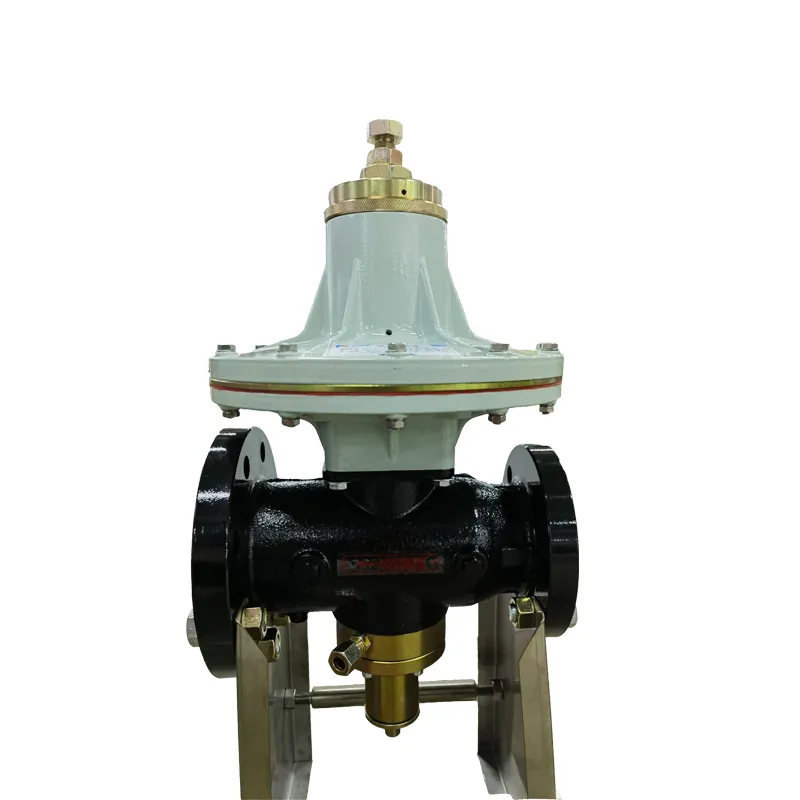
Dec . 11, 2024 08:45
Back to list
منظم الضغط
Understanding Pressure Regulators The Key to Safe and Efficient Gas and Fluid Management
Pressure regulators are crucial devices in various industries, ensuring the safe and efficient management of gases and fluids. Their primary function is to maintain a consistent output pressure, regardless of fluctuations in the input pressure or changes in flow demand. This article explores the importance, working principles, types, applications, and benefits of pressure regulators.
Importance of Pressure Regulators
In many applications, it's vital to control pressure accurately to prevent damage to equipment, ensure safety, and improve efficiency. For instance, in gas supply systems, excessive pressure can lead to equipment failure, explosions, or leaks. Similarly, in fluid systems used for manufacturing or processing, maintaining the correct pressure can guarantee product quality and consistency. Pressure regulators play a vital role in achieving these goals by controlling the pressure levels and protecting downstream equipment.
How Pressure Regulators Work
At its core, a pressure regulator operates on the principle of maintaining a set pressure level. When gas or fluid enters the regulator, it passes through a diaphragm or a piston. This mechanism reacts to changes in pressure; if the output pressure exceeds the setpoint, the diaphragm moves to close the inlet valve, reducing the flow until the pressure stabilizes. Conversely, if the output pressure drops below the desired level, the diaphragm allows more flow through the inlet valve.
This feedback loop ensures that the output pressure remains within the designated range, even if there are variations in the input pressure or flow demand. Most regulators are also equipped with an adjustable set point, allowing users to customize the output pressure according to specific requirements.
Types of Pressure Regulators
There are several types of pressure regulators available, each designed for specific applications
.
2. Two-Stage Regulators Ideal for applications with varying pressure levels, two-stage regulators maintain a more consistent output pressure by providing an additional stage of regulation. They're often used in industries requiring precise control, such as pharmaceuticals and food processing.
منظم الضغط

3. Back Pressure Regulators These regulators maintain a certain pressure upstream in a system and are used in applications like wastewater treatment and chemical processing.
4. Relief Valves These devices act as safety features, automatically releasing pressure if it exceeds a predetermined level, thereby preventing damaging overpressure situations.
Applications of Pressure Regulators
Pressure regulators are widely utilized across various sectors, including
- Healthcare Regulating oxygen supply in hospitals to ensure patient safety. - Food and Beverage Controlling the gas supply for carbonation processes, ensuring consistent product quality. - Manufacturing Managing hydraulic systems and pneumatic tools, providing reliable operation and efficiency. - Chemical Maintaining the pressure in reaction vessels to control chemical processes effectively.
Benefits of Using Pressure Regulators
The advantages of incorporating pressure regulators into systems are numerous
- Safety By controlling pressure levels, regulators help prevent accidents and equipment damage. - Efficiency They improve system performance by ensuring optimal pressure, minimizing waste, and reducing energy consumption. - Cost-Effective Regulating pressure can prolong the lifespan of equipment, reducing maintenance and replacement costs.
Conclusion
In summary, pressure regulators are indispensable components in various applications where pressure control is critical. Their ability to maintain consistent output pressure not only enhances the safety and efficiency of systems but also ensures the reliability of operations across diverse industries. Understanding their functioning and benefits can lead to better decisions regarding system design and equipment selection, ultimately promoting a safer and more efficient working environment. As technology advances, further innovations in pressure regulation will likely continue to enhance performance and safety in industrial applications.
Latest news
-
Safety Valve Spring-Loaded Design Overpressure ProtectionNewsJul.25,2025
-
Precision Voltage Regulator AC5 Accuracy Grade PerformanceNewsJul.25,2025
-
Natural Gas Pressure Regulating Skid Industrial Pipeline ApplicationsNewsJul.25,2025
-
Natural Gas Filter Stainless Steel Mesh Element DesignNewsJul.25,2025
-
Gas Pressure Regulator Valve Direct-Acting Spring-Loaded DesignNewsJul.25,2025
-
Decompression Equipment Multi-Stage Heat Exchange System DesignNewsJul.25,2025

